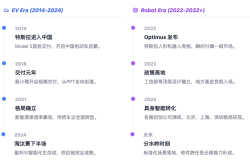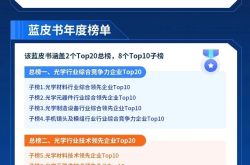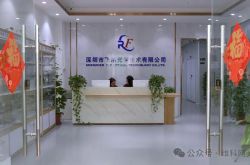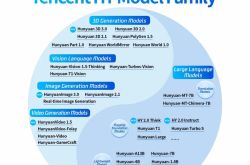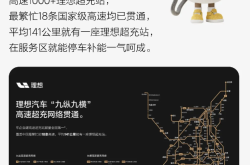The Evolving AI Ecosystem: A Glimpse into DingTalk's Future
![]() 07/13 2025
07/13 2025
![]() 547
547

Why is DingTalk becoming an "incubator" for industry AI post Wu Zhao's return?
Since Wu Zhao's return, the market eagerly anticipates his leadership in DingTalk's next developmental phase.
With AI profoundly restructuring enterprise services and heightened competition in the collaborative office market, capturing the AI dividend has become pivotal in platform competition. As a platform with a substantial user base, the world wonders if DingTalk can find a more distinctive breakthrough based on its current ecological foundation.
Recently, an industry-wide buzz surrounded a significant development: After encountering a bottleneck in accuracy improvement, the "Doukou Gynecological AI Large Model" developed by DingTalk partner Yishengjiankang was transferred to the DingTalk Enterprise Exclusive AI Platform. With support in data processing, computing power scheduling, model optimization, etc., the accuracy rate surged from 78% to 90.2% within a month.
This seemingly straightforward medical scientific achievement actually sends an intriguing signal.
From a technological application standpoint, as DingTalk's first vertical category-specific large model to assist the industry, "Doukou" showcases AI implementation in the medical field. By choosing the highly specialized field of gynecology and publishing impressive professional test data, DingTalk demonstrates stronger persuasive power in focusing on "industry-specific" vertical AI.
This indicates that, compared to vague talk about general AI, DingTalk encourages and supports ecosystem partners to delve deeply into industry-specific Know-How, solve practical and professional business challenges, and signifies that the platform is transcending the traditional SaaS, service providers, consulting, and delivery-dominated ecological model, extending into the burgeoning field of AI startups.
DingTalk's focus on the AI ecosystem strategy marks a new developmental path.
Under this strategy, the "Doukou Gynecological AI Large Model" is merely the starting point. The platform's role will evolve into a hub connecting myriad industries, computing resources, industry data, and AI developers, providing comprehensive support from data processing to service implementation and even commercialization.
For DingTalk, by empowering countless AI entrepreneurs, it can swiftly cover a broader range of industry scenarios, forming a rich "AI application matrix." The challenges lie in the scale effect of the ecological network, integration convenience, and deep enterprise workflow integration, all of which open a new window into DingTalk's future.
01 Is Reshaping the Industry AI Ecosystem Really That Important?
In the global technology landscape, from the 19th-century electric power revolution's power grid ecosystem to the 21st-century mobile internet's AppStore ecosystem, the "ecosystem strategy" has always been the core driver of industry development.
Take Apple as an example. iOS provides developers with unified and convenient development tools and platforms, attracting millions of developers worldwide, enriching applications to attract consumers to purchase terminal devices, which in turn incentivizes developers to continue innovating, creating a virtuous cycle.
Consider Cursor, which has skyrocketed in popularity over the past two years. Unlike traditional programming assistance tools, Cursor elevates AI to a primary productivity tool, forming an irreplaceable "digital infrastructure" value among developer groups. Technology coexistence, community co-construction, and data integration; this developer-centric ecological collaboration is considered by the outside world to be the core paradigm of the next generation of technological revolution.
Conversely, in the domestic AI market, the importance of the ecosystem has also become an industry consensus.
The direct motivation for building an AI ecosystem stems from a series of systemic contradictions that a single enterprise cannot resolve during the technology's transition from the laboratory to industrial implementation.
From an industry practice perspective, the popularization of general large models has laid the groundwork for AI applications, but industry Know-How is dispersed across various vertical fields, and enterprises need more personalized solutions:
The medical industry requires integrating clinical guidelines, case data, and diagnosis and treatment processes; the manufacturing industry needs to interface with special parameters for industrial scenarios such as production scheduling, equipment operation and maintenance, and quality inspection; and the financial industry needs to embed business rules such as risk control models, compliance clauses, and customer segmentation.
However, adapting to the business logic, professional knowledge, and scenario processes of different industries is not something a single enterprise can accomplish.
While they eagerly hope to use AI to reduce costs and increase efficiency, they lack the technical capabilities to build industry-specific models in reality, face security risks of entrusting core business data to cloud-based large models, and are uncertain about how to integrate AI into existing business processes.
Even if some enterprises can build exclusive large models, they often face difficulties in the initial stage: vague demand positioning, unsure of specific problems to solve; chaotic data preparation, lack of high-quality annotation, much like the gynecological model initially developed by the Yishengjiankang team, the 78% accuracy rate was always a crucial leap away from clinical usability.
The root of these problems lies in the fact that AI implementation is a systematic project involving multiple links such as data, algorithms, computing power, and scenario verification. What enterprises lack is precisely a full-chain technology closed loop from data processing to model training.
At this juncture, the value of the ecological platform becomes prominent.
By constructing a collaboration network of "general technology platforms + industry professional partners," DingTalk dismantles the "full chain" into standardized services, providing capabilities such as data cleaning, model training, and deployment tools. Industry partners contribute professional knowledge and scenario requirements to jointly develop industry-specific solutions, thereby lowering the entry barrier for enterprises.
Taking the "Doukou Gynecological AI Large Model" as an example, as a medical enterprise, Yishengjiankang is familiar with gynecological diagnosis and treatment scenarios but lacks AI engineering capabilities. DingTalk provides full-process support in data processing, computing power scheduling, model optimization, etc., ultimately increasing the model's accuracy rate to 90.2%.
In this manner, enterprises can concentrate on their core businesses rather than getting bogged down in technical details, significantly shortening the cycle from AI "idea" to "implementation".
02 Why DingTalk?
Previously, a representative from a domestic BI vendor told "Xinmou" that despite the emergence of various large factory ecosystem concepts in recent years, only DingTalk can genuinely bring orders to ecosystem partners, and these orders account for over 50% of their total revenue.
The most intuitive manifestation is the substantial increase in ISVs relying on DingTalk's vast business traffic.
This time, focusing on the AI ecosystem, to a certain extent, DingTalk's primary task can be understood as "building a joint reactor for industrial intelligence." Ideally:
By aggregating the digital needs of massive enterprise users to form a gravitational field, it attracts professional developers to enter the field; then, it provides a complete set of toolchains from data, computing power to models, transforming developers' professional capabilities into implementable AI products; finally, it accurately matches these products to demanding enterprises through channels such as the intelligent agent market, forming a value closed loop.
When the accuracy rate of the "Doukou Gynecological AI Large Model" soared on DingTalk, it was supported by the coordination of factors such as medical data preprocessing technology, computing resource scheduling, and medical diagnosis knowledge graphs. This is precisely the chemical reaction generated by ecological collaboration.
Of course, this also raises another crucial question: Why is DingTalk doing this, or why can DingTalk succeed in doing this?
Considering the once-popular concept of "Super App," which aims to create a comprehensive application integrating multiple functions and services, becoming a super entry point for users' lives and work, it is essentially also an ecological concept. But in reality, most Super Apps often only stay on the surface of function aggregation, lacking a sufficiently deep ecological foundation.
In stark contrast, as China's largest collaborative office platform, DingTalk naturally connects with massive enterprise users, accumulating substantial enterprise digitalization needs and scenarios. Coupled with past experience in serving SaaS vendors and service providers, it has refined a set of ecological service capabilities "from technology development to commercial realization," which is far from a simple pile of functions.
On the one hand, before the prevalence of AI, relying on its vast user base, the platform introduced various partners covering multiple fields such as smart hardware, IoT devices, cloud computing, big data, and security. This cross-field, all-round ecological layout enables it to meet the diverse and deep-level needs of enterprises, far exceeding the scope of Super Apps that only provide single or limited services.
On the other hand, DingTalk has assisted numerous industries in achieving digital transformation and successful development, accumulating rich industry experience and a plethora of successful cases. Whether it's digital management of medical processes, intelligent operation and maintenance of manufacturing equipment, or integrated solutions in the education field, all of these provide a practical foundation for its ecological construction.
It is precisely because of this that after undergoing various refinements across thousands of industries, DingTalk has the foundation to reshape the industry AI ecosystem.
More importantly, as the platform expands its partners to AI entrepreneurs, its capabilities are reused and upgraded: using platform tools to address the technical threshold of AI development, leveraging the enterprise user pool to solve the "difficult commercialization" dilemma, avoiding direct competition with general large model vendors while grasping the last mile of AI implementation.
From this perspective, the success of the "Doukou Gynecological AI Large Model" can perhaps serve as the starting point for DingTalk's ecological transformation, verifying the strategy's feasibility and announcing the platform's evolution from an "enterprise collaboration tool" to an "industry AI incubator." Through external empowerment, it allows AI to genuinely benefit thousands of industries, transforming it from a game played by a few giants.
03 The Ongoing AI Ecological Transformation: A Glimpse into DingTalk's Future
Historical experience reveals a pattern: Whenever the complexity of technology surpasses a critical point, ecologicalization becomes an inevitable choice.
In the early stages of the electric power revolution, Edison used a closed direct current system to compete against Tesla's alternating current ecosystem, ultimately losing to the scale effect of the power grid; in the mobile internet era, the story of Nokia's proprietary system being crushed by the iOS and Android ecosystems was repeated.
The current AI industry is at a similar inflection point.
The rise of the industry AI ecosystem is reshaping the underlying logic of the technology economy. Compared to the traditional model where technology giants control API interfaces and enterprises pay based on usage but cannot participate in value creation; in the ecological model, the platform provides infrastructure, developers cultivate products, and enterprises reap the benefits of cost reduction and efficiency improvement, with all three sharing the unlimited value-added brought about by ecological expansion.
It is noteworthy that the particularity of the domestic market has intensified the urgency of the ecological strategy. After all, for a long time, compared to the higher digitalization foundation of European and American enterprises, a significant number of domestic enterprises are still in the early stages of digital transformation. Especially in the AI era, they not only need a lower threshold for AI development but also need to genuinely witness the practical value AI brings to specific scenarios.
As AI shifts from general large model competition to the depths of industry implementation, the ecosystem serves as an operating system connecting technology supply and industry demand – it is both a "converter" of platform capabilities, adapting technology into industry solutions; and an "amplifier" of enterprise capabilities, so that small and medium-sized enterprises no longer struggle with the question of "whether to do AI," and large enterprises no longer worry about "how to do AI".
From DingTalk's ecological expansion to vertical exploration in various industries, it is evident that only players with a profound understanding of the industry can make AI a "productivity tool" for thousands of industries. DingTalk's future can perhaps be outlined with three keywords: a super incubator for industry AI, an operating system for enterprise digitization, and a value hub for ecological collaboration.
Just like early iOS, Apple provides development tools, developers focus on application innovation, and users gain a rich experience. DingTalk's ambition is to replicate this logic in the enterprise services field, except this time, the "applications" have become AI products across various industries.

